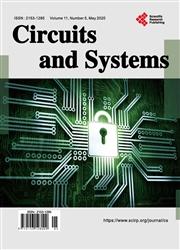A BP Artificial Neural Network Model for Earthquake Magnitude Prediction in Himalayas, India
引用次数: 49
Abstract
The aim of this study is to evaluate the performance of BP neural network techniques in predicting earthquakes occurring in the region of Himalayan belt (with the use of different types of input data). These parameters are extracted from Himalayan Earthquake catalogue comprised of all minor, major events and their aftershock sequences in the Himalayan basin for the past 128 years from 1887 to 2015. This data warehouse contains event data, event time with seconds, latitude, longitude, depth, standard deviation and magnitude. These field data are converted into eight mathematically computed parameters known as seismicity indicators. These seismicity indicators have been used to train the BP Neural Network for better decision making and predicting the magnitude of the pre-defined future time period. These mathematically computed indicators considered are the clustered based on every events above 2.5 magnitude, total number of events from past years to 2014, frequency-magnitude distribution b-values, Gutenberg-Richter inverse power law curve for the n events, the rate of square root of seismic energy released during the n events, energy released from the event, the mean square deviation about the regression line based on the Gutenberg-Richer inverse power law for the n events, coefficient of variation of mean time and average value of the magnitude for last n events. We propose a three-layer feed forward BP neural network model to identify factors, with the actual occurrence of the earthquake magnitude M and other seven mathematically computed parameters seismicity indicators as input and target vectors in Himalayan basin area. We infer through comparing curve as observed from seismometer in Himalayan Earthquake catalogue comprised of all events above magnitude 2.5 mg, their aftershock sequences in the Himalayan basin of year 2015 and BP neural network predicting earthquakes in 2015. The model yields good prediction result for the earthquakes of magnitude between 4.0 and 6.0.印度喜马拉雅山地震震级预测的BP人工神经网络模型
本研究的目的是评估BP神经网络技术在喜马拉雅地区地震预测中的性能(使用不同类型的输入数据)。这些参数提取自喜马拉雅盆地1887 - 2015年128年来所有小、大事件及其余震序列的喜马拉雅地震目录。这个数据仓库包含事件数据、以秒为单位的事件时间、纬度、经度、深度、标准差和震级。这些野外数据被转换成8个数学计算参数,称为地震活动性指标。这些地震活动性指标已被用于训练BP神经网络,以便更好地决策和预测预定义的未来时间段的震级。考虑的这些数学计算指标是基于2.5级以上事件的聚类,过去几年到2014年的事件总数,频率-震级分布b值,n个事件的古登堡-里希特反幂律曲线,n个事件中释放的地震能量的平方根率,事件释放的能量,基于古登堡-里希特反幂律的回归线的均方差。最近n次事件的平均时间和震级平均值的变异系数。以喜马拉雅盆地实际发生震级M级等7个数学计算参数地震活动性指标为输入和目标向量,提出了一种三层前馈BP神经网络模型进行因子识别。我们通过喜马拉雅地震目录中地震仪观测到的对比曲线、喜马拉雅盆地2015年2.5 mg以上地震事件的余震序列以及BP神经网络对2015年地震的预测推断。该模型对4.0 ~ 6.0级地震具有较好的预测效果。
本文章由计算机程序翻译,如有差异,请以英文原文为准。
求助全文
约1分钟内获得全文
求助全文

 求助内容:
求助内容: 应助结果提醒方式:
应助结果提醒方式:


